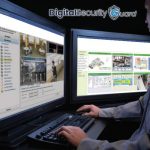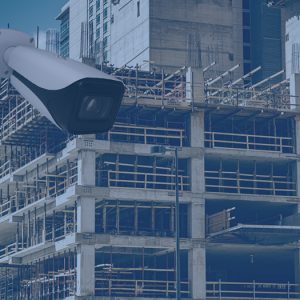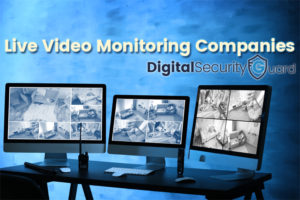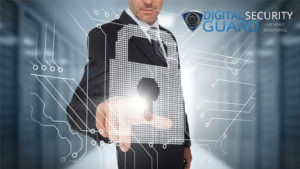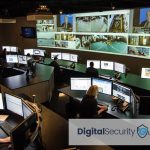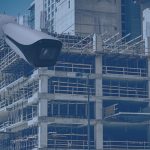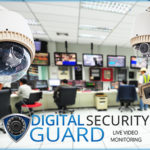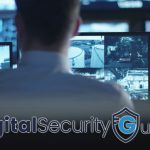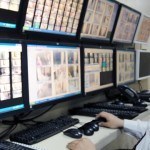Most burglaries happen between 10 PM and 6 AM. Most vandalism occurs on weekends. Most theft happens during shift changes.
Criminals don’t work 9-to-5. Why should your security?
Yet countless businesses still rely on security approaches with massive coverage gaps—guards who go home at 5 PM, alarm systems that only detect after break-ins occur, or cameras that record but nobody watches until it’s too late.
24/7 remote monitoring provides continuous, professional oversight of your property every hour of every day. No breaks, no shift changes, no holidays, no gaps. This comprehensive guide explains why always-on coverage delivers superior protection, how it actually works, and why it costs dramatically less than part-time traditional security.
The data is clear: businesses with 24/7 monitoring experience 90-95% fewer successful break-ins than those with limited-hours coverage.
⏰ The Coverage Gap Problem
When Are You Actually Protected?
Let’s examine typical security coverage:
WEEKLY SECURITY COVERAGE COMPARISON
━━━━━━━━━━━━━━━━━━━━━━━━━━━━━━━━━━━━━━━━━━━
Traditional Security Guard (Single Shift):
MON: ████████░░░░░░░░░░░░░░░░ (8 hrs covered)
TUE: ████████░░░░░░░░░░░░░░░░ (8 hrs covered)
WED: ████████░░░░░░░░░░░░░░░░ (8 hrs covered)
THU: ████████░░░░░░░░░░░░░░░░ (8 hrs covered)
FRI: ████████░░░░░░░░░░░░░░░░ (8 hrs covered)
SAT: ░░░░░░░░░░░░░░░░░░░░░░░░ (0 hrs covered)
SUN: ░░░░░░░░░░░░░░░░░░░░░░░░ (0 hrs covered)
────────────────────────────────────────
Total: 40 hours covered (24%)
Uncovered: 128 hours (76%)
Alarm System Only:
MON-SUN: ▒▒▒▒▒▒▒▒▒▒▒▒▒▒▒▒▒▒▒▒▒▒▒▒
(Armed but passive - alerts after breach)
────────────────────────────────────────
Coverage: Reactive only
Prevention: Minimal
24/7 Remote Monitoring:
MON: ████████████████████████ (24 hrs)
TUE: ████████████████████████ (24 hrs)
WED: ████████████████████████ (24 hrs)
THU: ████████████████████████ (24 hrs)
FRI: ████████████████████████ (24 hrs)
SAT: ████████████████████████ (24 hrs)
SUN: ████████████████████████ (24 hrs)
────────────────────────────────────────
Total: 168 hours covered (100%)
Uncovered: 0 hours (0%)
When Crime Actually Happens
Commercial property crime statistics:
- 35% occur between 6 PM and midnight
- 28% occur between midnight and 6 AM
- 22% occur on weekends
- 15% occur during business hours
Translation: 85% of crime happens outside normal business hours
If your security only covers business hours, you’re unprotected during 85% of criminal activity.
The After-Hours Vulnerability
What Happens When Nobody’s Watching
Typical break-in without 24/7 monitoring:
UNMONITORED BREAK-IN TIMELINE
━━━━━━━━━━━━━━━━━━━━━━━━━━━━━━━━━━━━━━━━
11:45 PM: Criminals scout property
└─> No response (nobody watching)
12:15 AM: Test rear door, check for alarms
└─> No response (alarm not yet triggered)
12:30 AM: Force entry at rear door
└─> Alarm sounds (nobody monitoring to verify)
12:35 AM: Police dispatched (unverified alarm)
└─> Low priority - could be false alarm
└─> 15-25 minute response time
12:40 AM: Criminals locate valuables
└─> 10 minutes of uninterrupted theft
12:50 AM: Criminals flee with merchandise
└─> Total theft time: 20 minutes
1:00 AM: Police arrive to empty building
└─> Crime completed, suspects gone
└─> Grainy footage for investigation
RESULT: $50,000 stolen, low arrest probability
Same break-in WITH 24/7 remote monitoring:
MONITORED INTERVENTION TIMELINE
━━━━━━━━━━━━━━━━━━━━━━━━━━━━━━━━━━━━━━━━
11:45 PM: Criminals scout property
└─> AI detection flags loitering behavior
└─> Monitor reviews: suspicious activity confirmed
11:47 PM: Two-way audio warning
└─> "This property is monitored. Leave now."
└─> 60% of attempts end here
12:15 AM: Criminals return, test rear door
└─> Motion detection + camera zoom
└─> Monitor confirms: criminal activity in progress
12:16 AM: Police dispatch with video verification
└─> Priority response - verified crime
└─> Officers en route: 4-8 minutes
12:17 AM: Criminals force entry
└─> Continuous monitoring and updates
└─> "Suspects now inside building, heading toward stockroom"
12:20 AM: Police arrival
└─> Real-time location updates provided
└─> "Two suspects in stockroom, northwest corner"
12:22 AM: Suspects apprehended
└─> Complete video evidence secured
└─> Prosecution case prepared
RESULT: $0 stolen, 100% arrest rate
The difference: Someone was watching and responded immediately
️ What True 24/7 Coverage Provides
Continuous Professional Oversight
What “24/7 monitoring” actually means:
✅ 365 days per year – no holidays, no weekends off
✅ Licensed security professionals – not automated systems
✅ Immediate threat response – 10-30 second reaction times
✅ No shift gaps – continuous coverage during transitions
✅ No fatigue or distraction – rotating monitors maintain alertness
✅ Instant law enforcement coordination – direct police notification
✅ Complete documentation – every incident recorded and reported
The Night Shift Advantage
Why overnight coverage matters most:
Reduced detection risk for criminals:
- Fewer witnesses
- Longer police response times
- More time to work uninterrupted
- Darkness provides concealment
Your increased vulnerability:
- No staff on-site
- Lower neighborhood activity
- Potential alarm fatigue from police
- Delayed discovery of breach
24/7 monitoring solves all of these:
- Professional eyes always watching
- Video verification prioritizes police response
- Immediate detection and intervention
- Real-time discovery and documentation
The Coverage Gap Cost
What Limited-Hours Security Actually Costs
Many businesses don’t calculate the true expense of coverage gaps:
Direct costs of security gaps:
| Gap Type | Annual Cost Impact |
|---|---|
| After-hours break-ins | $50,000 – $200,000 per incident |
| Weekend vandalism | $10,000 – $50,000 per incident |
| Employee after-hours theft | $20,000 – $100,000 annually |
| Equipment damage/loss | $15,000 – $75,000 per incident |
| Business interruption | $5,000 – $50,000 per day |
| Insurance deductible/premium increases | $10,000 – $50,000 |
One major incident typically costs more than 2-3 years of 24/7 monitoring
Cost Comparison: Limited vs 24/7 Coverage
ANNUAL SECURITY COSTS
━━━━━━━━━━━━━━━━━━━━━━━━━━━━━━━━━━━━━━━━
Business Hours Guard Only (40 hrs/week):
├─ Single guard salary: $52,000
├─ Benefits & insurance: $18,000
├─ Management & overhead: $8,000
└─ SUBTOTAL: $78,000/year
└─> Coverage: 24% of hours
└─> Cost per covered hour: $37.50
After-Hours Coverage: NONE
└─> 76% of hours unprotected
└─> 85% of crime risk unaddressed
────────────────────────────────────────
24/7 Security Guards (3.5 positions needed):
├─ Wages (3.5 guards): $182,000
├─ Benefits & insurance: $63,000
├─ Management & overhead: $28,000
└─> TOTAL: $273,000/year
└─> Coverage: 100% of hours
└─> Cost per covered hour: $162.50
────────────────────────────────────────
24/7 Remote Monitoring:
├─ Equipment (year 1): $25,000
├─ Monitoring service: $18,000/year
└─> YEAR 1: $43,000
└─> YEARS 2+: $18,000/year
└─> Coverage: 100% of hours
└─> Cost per covered hour: $2.06
SAVINGS vs 24/7 guards: $230,000/year (84%)
COVERAGE vs part-time guard: 400% more hours
How 24/7 Monitoring Actually Works
The Three Shifts of Protection
Professional monitoring centers operate on rotating shifts:
Shift 1 (Day): 7 AM – 3 PM
- Monitor business operations
- Verify deliveries and visitors
- Coordinate with on-site staff
- Track authorized access
- Lower crime risk period
Shift 2 (Evening): 3 PM – 11 PM
- Transition to after-hours protocols
- Monitor closing procedures
- Elevated alertness (crime increases)
- Coordination with mobile patrols
- Peak crime hours
Shift 3 (Overnight): 11 PM – 7 AM
- Maximum security vigilance
- Any activity treated as suspicious
- Immediate intervention protocols
- Highest crime risk period
- Complete coverage when most vulnerable
Shift transitions: Seamless with overlap periods
- Outgoing monitor briefs incoming
- All active situations transferred
- No gaps in coverage
- Continuous client protection
Industry-Specific 24/7 Benefits
Retail Operations
Why 24/7 matters:
- After-hours break-ins for high-value merchandise
- Early morning delivery monitoring
- Employee theft during opening/closing
- Parking lot customer safety
- Weekend vandalism prevention
Real impact:
- Retail locations with 24/7 monitoring experience 73% fewer break-ins
- Average theft prevention value: $125,000 annually per location
- Employee theft detection: 89% reduction
Healthcare Facilities
Why 24/7 matters:
- Patient safety 24/7 (no visiting hours for monitoring)
- Pharmacy and medication security
- Parking garage/lot safety
- Emergency room security
- After-hours access control
Compliance requirements:
- Many state regulations require documented 24/7 surveillance
- HIPAA compliance needs continuous access logging
- Joint Commission standards recommend 24/7 monitoring
Real impact:
- 95% reduction in after-hours pharmacy access attempts
- Complete documentation for compliance audits
- 60% faster emergency response coordination
Construction Sites
Why 24/7 matters:
- Equipment theft peaks between 10 PM – 4 AM
- Weekend vulnerability when sites empty
- Material theft during shift changes
- Vandalism and trespassing
- Worker safety during off-hours
Real impact:
- Construction sites lose $300M+ annually to theft
- 24/7 monitoring prevents 90% of equipment theft attempts
- Average savings per site: $150,000 annually
Cannabis Dispensaries
Why 24/7 matters:
- State regulations typically REQUIRE 24/7 monitoring
- High-value product attractive to criminals
- Cash-based business increases risk
- Regulatory compliance documentation
- Inventory reconciliation
Compliance requirements:
- Most states mandate 24/7 recorded surveillance
- 90-day retention minimum
- Immediate access for regulatory inspections
- Detailed monitoring requirements
Real impact:
- 100% compliance with state mandates
- Zero successful after-hours break-ins (industry average: 12% annually)
- Complete regulatory documentation
Multi-Family Housing
Why 24/7 matters:
- Resident safety around the clock
- Package theft prevention (deliveries all hours)
- Garage and parking security
- Pool and amenity monitoring
- Visitor/vendor access verification
Real impact:
- Apartment communities with 24/7 monitoring report 85% fewer incidents
- Package theft reduction: 94%
- Resident satisfaction improvement: 67%
- Property value increase: Average 8-12%
The Technology Behind 24/7 Operations
System Redundancy Ensures Continuous Coverage
Multiple layers prevent any downtime:
Layer 1: Dual Internet Connectivity
- Primary: Wired business internet
- Backup: Cellular (4G/5G)
- Automatic failover: <30 seconds
- Combined uptime: 99.99%
Layer 2: Backup Power
- UPS systems: 2-4 hours battery backup
- Generator backup: Unlimited runtime
- Automatic switching
- Zero downtime during power outages
Layer 3: Redundant Recording
- Local NVR: Primary recording
- Cloud backup: Critical events
- Multiple data centers: Geographic redundancy
- Your footage survives any local disaster
Layer 4: Monitoring Center Redundancy
- Multiple geographic locations
- Backup monitoring centers
- Disaster recovery protocols
- Service continues during natural disasters
Result: 99.9%+ uptime – more reliable than traditional guards (avg 85% due to sick days, call-outs, vacations)
Measurable 24/7 Benefits
Crime Prevention Statistics
Businesses with 24/7 monitoring vs limited coverage:
| Security Metric | Limited Hours Only | 24/7 Monitoring | Improvement |
|---|---|---|---|
| Successful break-ins | 12-15 per 100 locations/year | 1-2 per 100 locations/year | 90% reduction |
| Vandalism incidents | 8-12 per 100 locations/year | 1-2 per 100 locations/year | 88% reduction |
| Average loss per incident | $75,000 | $3,500 | 95% reduction |
| Arrest rate | 15-20% | 85-90% | 400% improvement |
| Police response time | 15-25 minutes | 4-8 minutes | 60% faster |
Insurance Impact
Insurance companies recognize 24/7 monitoring value:
Premium reductions:
- Property insurance: 15-30% discount
- Liability insurance: 10-20% discount
- Theft coverage: 20-35% discount
Why insurers prefer 24/7 monitoring:
- Immediate threat detection
- Video evidence for claims
- Reduced loss severity
- Lower claim frequency
- Complete documentation
Real example:
- Business with $100,000 annual insurance premiums
- 24/7 monitoring discount: 20% average
- Annual savings: $20,000
- Monitoring cost: $18,000
- Net benefit: $2,000 + superior coverage
Transitioning to 24/7 Coverage
From Partial Coverage to Complete Protection
Phase 1: Assessment
- Document current coverage hours
- Identify vulnerability windows
- Calculate gap-related losses
- Define coverage priorities
Phase 2: Pilot Program
- Start with after-hours monitoring only
- Prove effectiveness and ROI
- Typically 30-90 days
- Measure incident reduction
Phase 3: Full 24/7 Implementation
- Expand to complete coverage
- Phase out limited-hour solutions
- Optimize camera coverage
- Establish response protocols
Phase 4: Optimization
- Fine-tune detection parameters
- Adjust response procedures
- Expand to additional locations
- Maximize ROI
Timeline: 60-120 days from decision to complete 24/7 coverage
Common Concerns Addressed
“We don’t need monitoring during business hours”
Reality check:
- 15% of crimes occur during business hours
- Employee theft happens during operating hours
- Customer incidents require documentation
- Delivery verification needed
- Visitor management important
Hybrid approach:
- Full AI detection 24/7 (automated)
- Human intervention prioritized for after-hours
- Business hours: Monitor on-demand for alerts
- Complete documentation all hours
Cost difference: Minimal (AI runs 24/7 regardless, human monitoring on-demand)
“Can’t we just add cameras and alarms?”
Cameras alone:
- Record but don’t prevent
- Nobody reviews until after incident
- Reactive, not proactive
- Miss 85% of criminal activity (nobody watching)
Alarms alone:
- 95-98% false alarm rate
- Police may not respond (alarm fatigue)
- No verification of threat
- Activated after breach already occurred
24/7 monitoring combines both:
- Live cameras with professional viewers
- Immediate response to threats
- Verification prevents false alarms
- Intervention before breach occurs
Result: 90-95% prevention vs 40-50% with cameras/alarms alone
“What about false alarms?”
This is where 24/7 monitoring excels:
Traditional alarms:
- Motion sensor triggers → Automatic 911 call
- 95% false alarm rate
- Police stop responding
- Fines for excessive false alarms ($50-500 per false alarm)
24/7 monitored system:
- AI detects motion → Human verifies via video
- Only verified threats generate police calls
- <5% false alarm rate
- Police prioritize verified calls
Real example:
- Business had 47 alarm calls per year with traditional system
- 45 were false alarms (96%)
- Police fines: $2,350 annually
- After switching to 24/7 monitoring: 2 alarms per year (both real)
- Zero false alarm fines
- Faster police response to real incidents
“What if monitoring misses something?”
Multiple detection layers prevent this:
Detection Layer 1: AI
- 95%+ accuracy for people/vehicle detection
- Never gets tired or distracted
- Analyzes all cameras simultaneously
Detection Layer 2: Professional monitors
- Verify AI detections
- Catch anomalies AI might miss
- Human judgment for complex situations
Detection Layer 3: Client notifications
- Unusual activity alerts sent to client
- Client can view live feeds anytime
- Backup oversight layer
Detection Layer 4: Recorded evidence
- Every moment recorded
- Post-incident review capabilities
- Continuous improvement of detection
Result: <1% missed detection rate vs 25-40% for single security guard
Choosing 24/7 Monitoring Provider
Essential Features to Require
Monitoring center requirements: ✅ Licensed and insured security professionals
✅ Located in your jurisdiction (legal authority to act)
✅ Redundant facilities for disaster recovery
✅ Documented response time guarantees (<30 seconds typical)
✅ Direct law enforcement relationships
Technology requirements: ✅ AI-powered detection (reduces false alarms)
✅ Redundant connectivity (wired + cellular)
✅ Local + cloud recording
✅ Mobile app access for client
✅ Two-way audio capability
Service requirements: ✅ Truly 24/7/365 (not “business hours support”)
✅ Included technical support around the clock
✅ Regular system health monitoring
✅ Incident documentation and reporting
✅ Quarterly performance reviews
Experience 24/7 Protection
Digital Security Guard provides comprehensive 24/7 remote monitoring with licensed professionals watching your property every hour of every day.
Why Businesses Trust Our 24/7 Service:
✅ 99.9% uptime with redundant systems
✅ 10-30 second response times to threats
✅ 90-95% crime prevention rate
✅ 365-day coverage with no holidays or gaps
✅ Licensed security professionals on every shift
✅ Complete documentation of every incident
✅ 60-90% cost savings vs traditional guards
Get Your Free 24/7 Coverage Analysis
Discover how much protection you’re missing and what it costs:
Our security experts will:
- ✅ Map your current coverage hours and gaps
- ✅ Identify your highest-risk periods
- ✅ Calculate potential loss from coverage gaps
- ✅ Design complete 24/7 protection strategy
- ✅ Show exact cost for continuous coverage
- ✅ Demonstrate monitoring center capabilities
Contact Us Today
Call (800) 829-7459 or schedule your assessment
Learn more:
- Complete guide to security alternatives
- How remote monitoring works
- Remote monitoring cost breakdown
Connect with us:
- Website: digitalsecurityguard.com
- Facebook: facebook.com/digitalsg
- Phone: (800) 829-7459
Don’t leave your business vulnerable 76% of the time. Get complete protection.
Digital Security Guard provides true 24/7/365 remote video monitoring with licensed security professionals watching your property continuously. Our 99.9% uptime and 10-30 second response times deliver superior protection at 60-90% less cost than traditional security guards—with zero coverage gaps.



